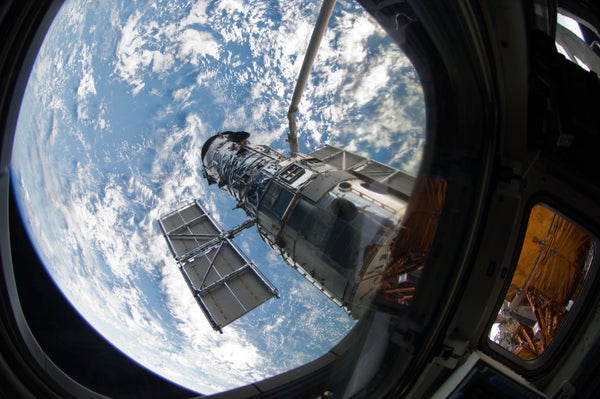It turns out it's tricky to troubleshoot a 1980s computer that's dashing around Earth hundreds of miles over our heads.
NASA has spent more than a week evaluating a computer issue that put the venerable
Hubble Space Telescope out of commission on June 13 and that may force the spacecraft to turn to its backup computer. Now, ongoing tests suggest that the issue the team has identified so far may not be at the root of the computer's problems, according to an update from the agency.
On supporting science journalism
If you're enjoying this article, consider supporting our award-winning journalism by subscribing. By purchasing a subscription you are helping to ensure the future of impactful stories about the discoveries and ideas shaping our world today.
"After performing tests on several of the computer’s memory modules, the results indicate that a different piece of computer hardware may have caused the problem, with the memory errors being only a symptom," NASA officials wrote in
a statement published Tuesday (June 22).
Although the initial anomaly suggested that a memory module was degrading, the team now suspects that the root of the issue might be in the computer's central processing module or that unit's connection with interface hardware.
Right now, the statement added, the team is designing tests to more confidently identify the problem; those tests "will be run in the next few days."
The NASA statement suggests that the team hasn't yet given up hope of reviving the main payload computer, but does lay out the plan for if that feat can't be accomplished. The telescope carries a backup computer that, like the main unit, was installed in 2009 during the final
astronaut servicing mission but hasn't been used since.
"The backup computer has not been powered on since its installation in 2009; however, it was thoroughly tested on the ground prior to installation on the spacecraft," NASA officials wrote in the statement.
If the team is forced to turn to the backup unit, Hubble would switch to that unit's central processing module and interface hardware. Switching computers would not affect access to the four memory modules on the spacecraft, NASA noted.
Astronauts deployed the Hubble Space Telescope from the space shuttle Discovery on April 25, 1990; five crews of astronauts later visited the spacecraft in orbit to
repair and upgrade the technology and instruments on board. However, NASA can no longer send such missions to fix the telescope, since they relied on the agency's fleet of space shuttles, which retired in 2011.
Copyright 2021 Space.com, a Future company. All rights reserved. This material may not be published, broadcast, rewritten or redistributed.
